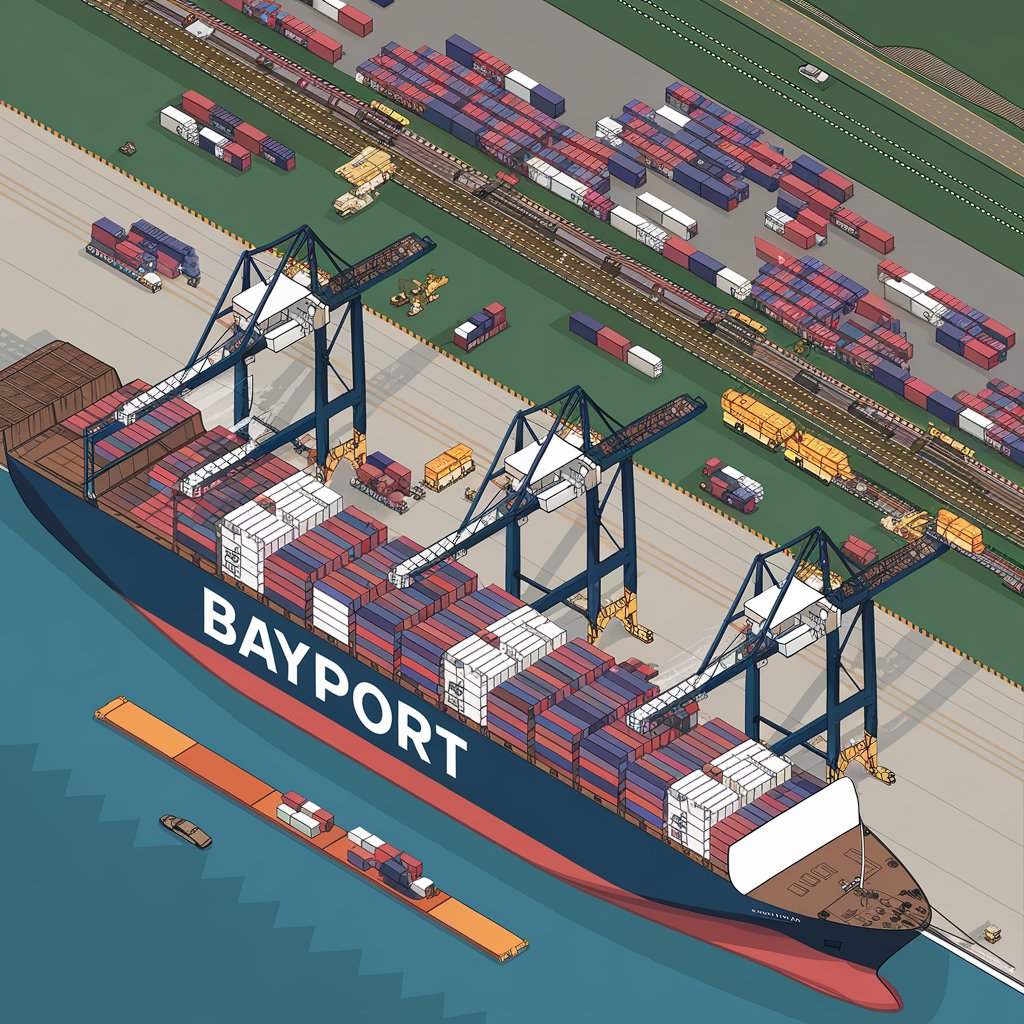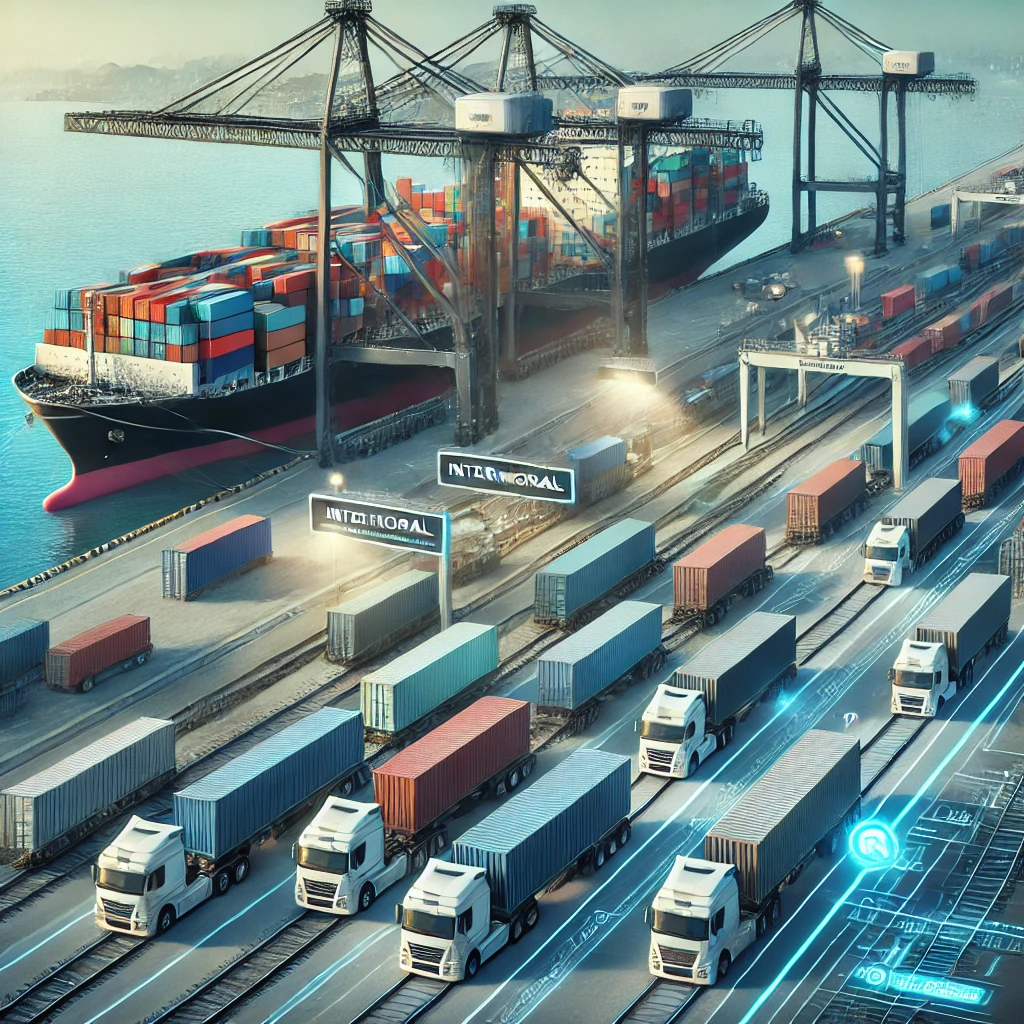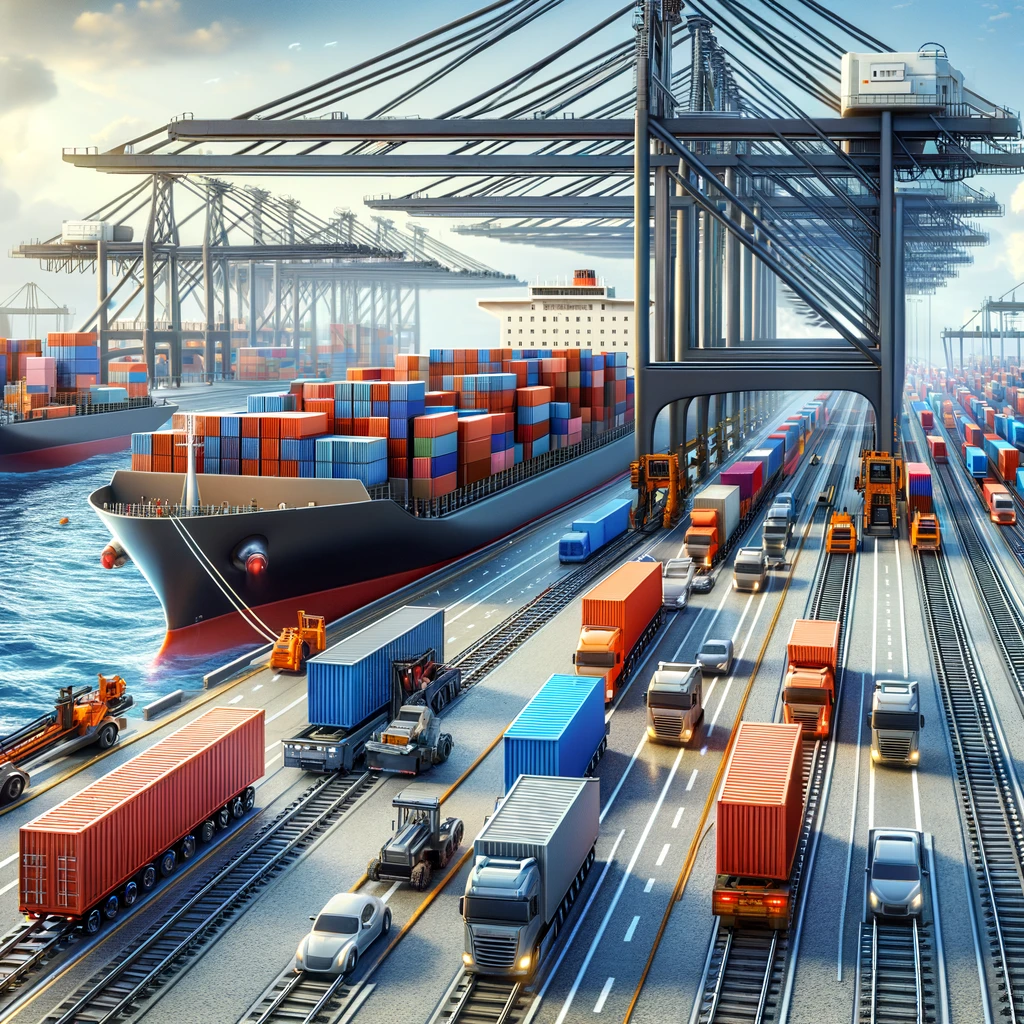Optimizing Intermodal Transportation: Bayport container terminal

Understanding Intermodal Transportation
Definition and Concept
Intermodal transportation bayport container terminal involves the use of multiple modes of transport (such as truck, rail, ship, and air) to move goods from origin to destination without handling the freight itself when changing modes. This seamless integration of different transportation methods offers several advantages:
- Increased efficiency
- Reduced handling and potential for damage
- Lower overall transportation costs
- Enhanced flexibility in routing and scheduling
Key Components of Intermodal Transportation
- Containers: Standardized units that can be easily transferred between different modes of transport.
- Intermodal terminals: Facilities where cargo is transferred between different modes of transportation.
- Transportation modes: Including truck, rail, ocean, and air transport.
- Information systems: Technologies that track and manage the movement of goods across different modes.
Benefits of Optimized Intermodal Transportation
- Cost Savings: By leveraging the strengths of each mode, companies can reduce overall transportation costs.
- Environmental Sustainability: Intermodal solutions often have a lower carbon footprint compared to single-mode transportation.
- Improved Security: Reduced handling of goods minimizes the risk of theft or damage.
- Increased Reliability: Multiple routing options enhance the ability to meet delivery deadlines.
- Scalability: Easily adaptable to fluctuating volumes and changing market conditions.
Strategies for Optimizing Intermodal Transportation
1. Comprehensive Network Analysis
- Conduct a thorough analysis of your supply chain network to identify potential intermodal opportunities.
- Use advanced analytics tools to model different scenarios and optimize routing decisions.
2. Leverage Technology for Visibility and Control
- Implement real-time tracking systems to monitor shipments across all modes.
- Utilize Transportation Management Systems (TMS) to optimize planning and execution of intermodal shipments.
3. Collaborate with Strategic Partners bayport container terminal
- Develop strong relationships with carriers, terminal operators, and other logistics service providers.
- Engage in collaborative planning to align schedules and improve overall efficiency.
4. Optimize Container Utilization
- Implement efficient loading strategies to maximize container space utilization.
- Consider the use of different container types (e.g., 20-foot, 40-foot, high-cube) based on cargo characteristics and route requirements.
5. Balance Speed and Cost bayport container terminal
- Analyze trade-offs between transit time and transportation costs to find the optimal balance for your supply chain needs.
- Consider time-definite intermodal services for critical shipments.
6. Streamline Documentation and Customs Processes
- Implement electronic documentation systems to reduce paperwork and expedite customs clearance.
- Stay informed about international trade regulations and leverage free trade agreements when applicable.
7. Invest in Staff Training and Development bayport container terminal
- Ensure your team is well-versed in the complexities of intermodal transportation.
- Provide ongoing training on new technologies and best practices in the field.
Case Studies: Successful Intermodal Optimization
Case Study 1: Retail Giant’s Intermodal Revolution
A major retail corporation optimized its supply chain bayport container terminal by:
- Shifting 50% of its long-haul trucking to intermodal rail
- Implementing a hub-and-spoke distribution model
- Utilizing advanced predictive analytics for demand forecasting
Results: 20% reduction in transportation costs and 30% decrease in carbon emissions.
Case Study 2: Automotive Manufacturer’s Just-In-Time Success
A leading automotive manufacturer enhanced its operations through:
- Implementing a sophisticated intermodal tracking system
- Coordinating closely with rail and trucking partners
- Optimizing container loading for automotive parts
Results: 40% reduction in inventory holding costs and 15% improvement in on-time deliveries.

Overcoming Challenges in Intermodal Transportation bayport container terminal
1. Infrastructure Limitations
- Challenge: Inadequate rail infrastructure or port congestion can cause delays.
- Solution: Work with local authorities and logistics partners to advocate for infrastructure improvements. Develop contingency plans for potential bottlenecks.
2. Coordination Complexity
- Challenge: Managing multiple transportation providers and modes can be complex.
- Solution: Implement advanced TMS solutions and establish clear communication protocols with all stakeholders.
3. Equipment Imbalances
- Challenge: Ensuring the right equipment is available at the right location.
- Solution: Collaborate with partners on equipment repositioning strategies and consider joining equipment sharing programs.
4. Last-Mile Delivery Optimization
- Challenge: Efficiently managing the final leg of intermodal transportation.
- Solution: Invest in route optimization software and consider partnerships with local delivery services.

Future Trends in Intermodal Transportation bayport container terminal
- Increased Automation: Implementation of autonomous vehicles and robotics in intermodal terminals.
- Blockchain Technology: Enhancing transparency and security in documentation and tracking.
- Internet of Things (IoT): Improved real-time tracking and condition monitoring of shipments.
- Artificial Intelligence: Advanced predictive analytics for optimizing routing and capacity utilization.
- Green Technologies: Integration of electric and alternative fuel vehicles in intermodal networks.
Measuring the Success of Intermodal Optimization bayport container terminal
To gauge the effectiveness of your intermodal transportation strategies bayport container terminal, consider tracking these key performance indicators (KPIs):
- Total transportation cost per unit
- On-time delivery rate
- Transit time
- Carbon footprint
- Inventory turnover ratio
- Damage and loss rates
- Equipment utilization rates

Best Practices for Implementing Intermodal Strategies
- Start with a Pilot Program: Begin with a small-scale implementation to test and refine your approach.
- Conduct Regular Audits: Continuously assess your intermodal network for optimization opportunities.
- Stay Informed: Keep abreast of industry trends, technological advancements, and regulatory changes.
- Foster a Culture of Innovation: Encourage your team to propose and test new ideas for improving intermodal efficiency.
- Prioritize Data Quality: Ensure that your data collection and management practices support accurate decision-making
Conclusion
Optimizing intermodal transportation presents a significant opportunity for logistics managers to enhance efficiency, reduce costs, and improve overall supply chain performance. By leveraging the strategies outlined in this guide, businesses can navigate the complexities of multi-modal shipping and gain a competitive edge in today’s global marketplace.
As technology continues to evolve and global trade patterns shift, the importance of efficient intermodal transportation will only grow. Logistics managers who embrace these optimization strategies and remain adaptable to emerging trends will be well-positioned to lead their organizations to success in the dynamic world of global logistics.
Remember, the key to successful intermodal optimization lies in a holistic approach that combines strategic planning, technological innovation, and strong partnerships across the supply chain ecosystem. By continually refining your intermodal strategies and staying attuned to market dynamics, you can unlock the full potential of your logistics operations and drive sustainable growth for your business.
